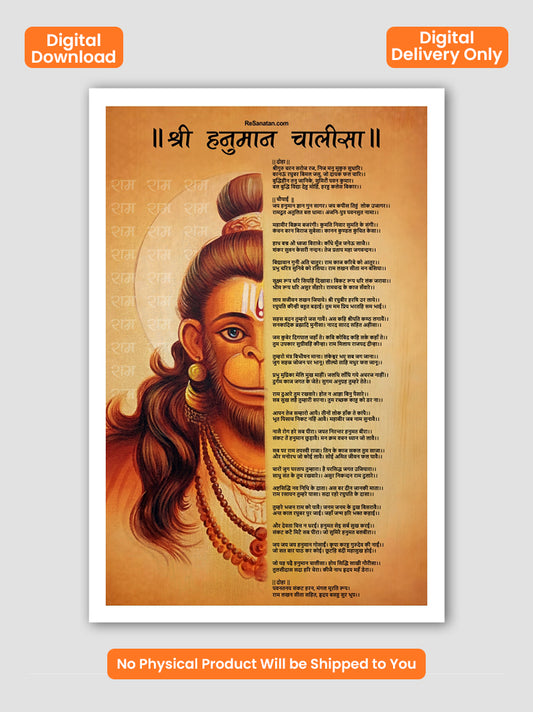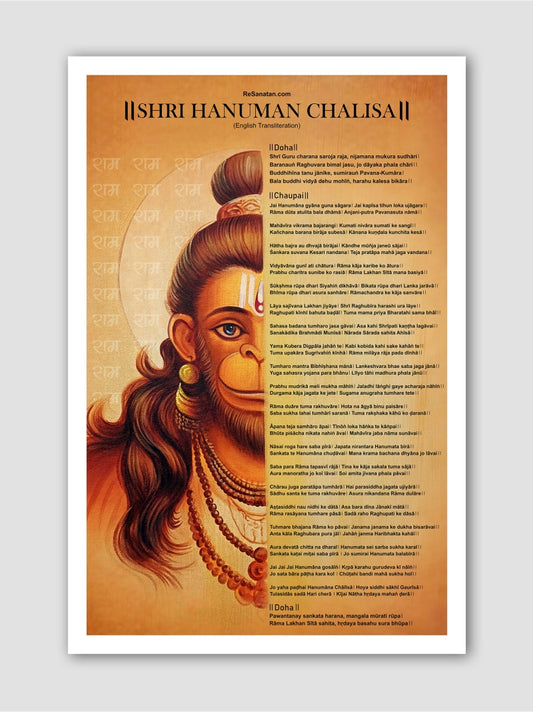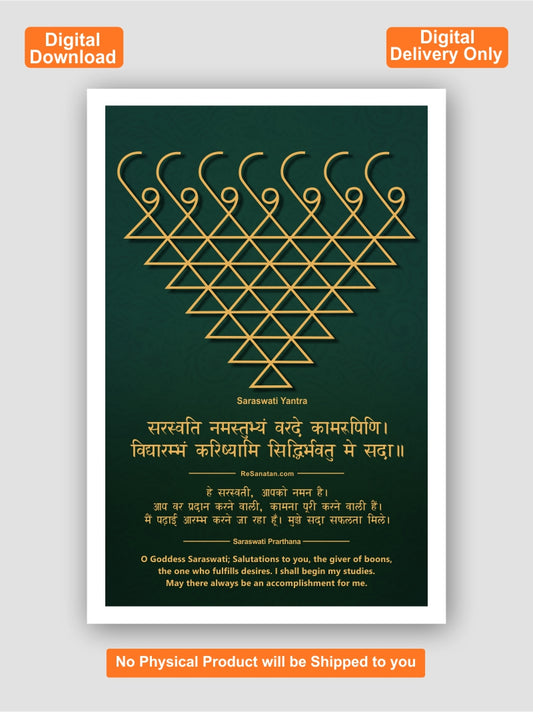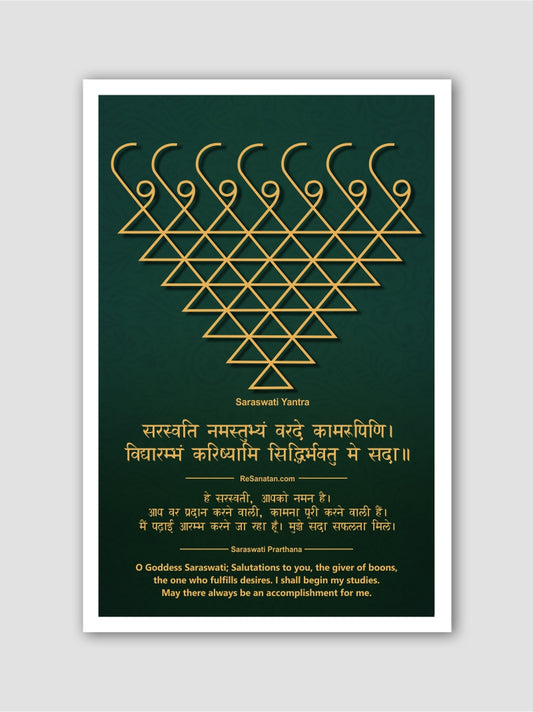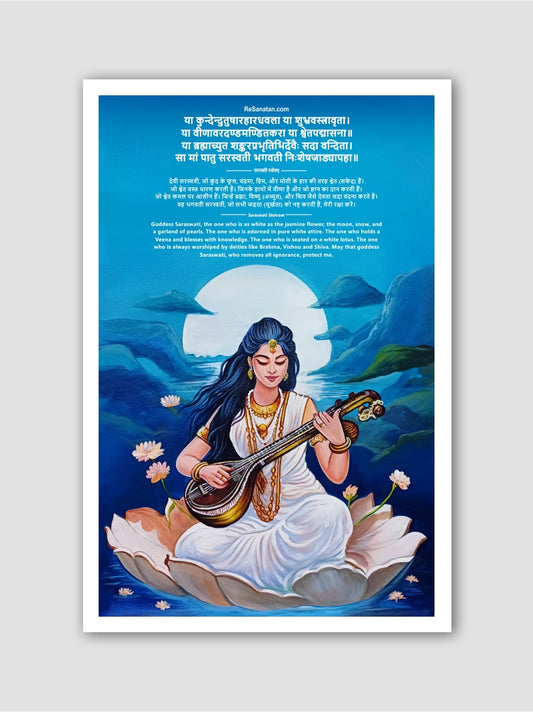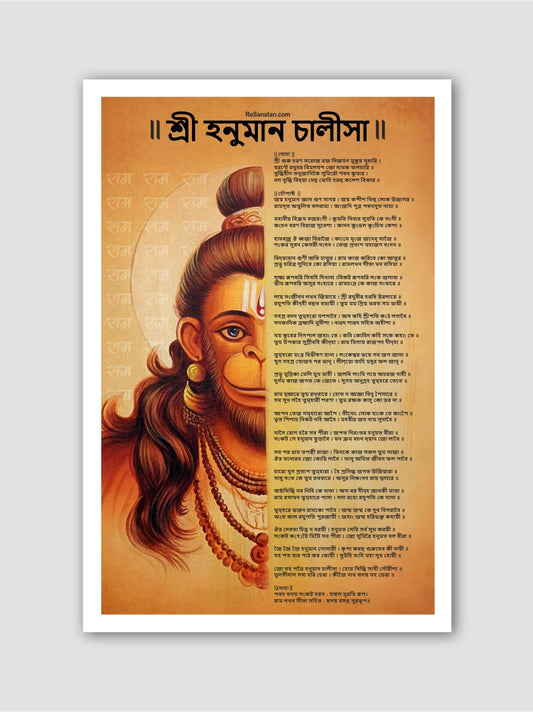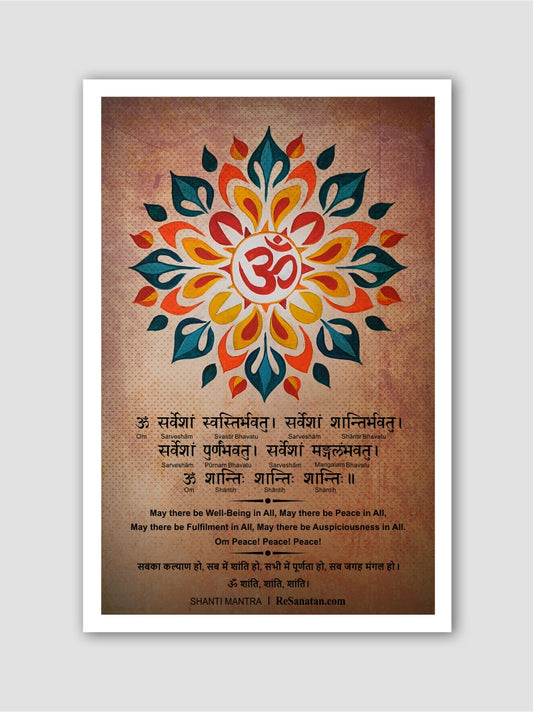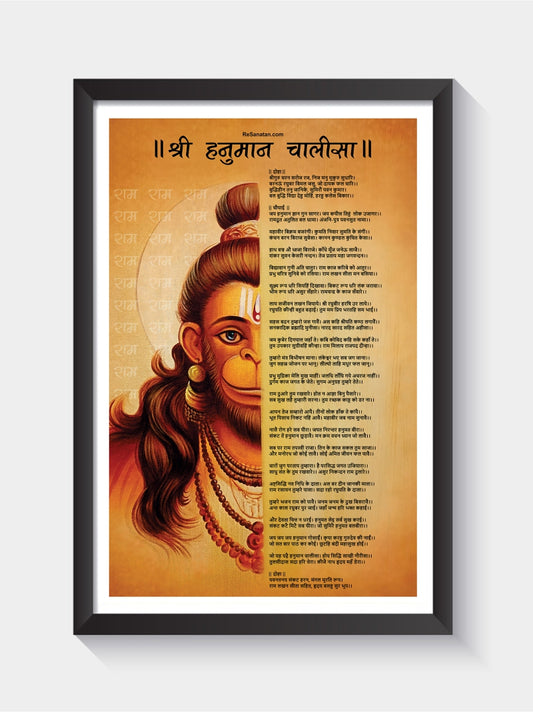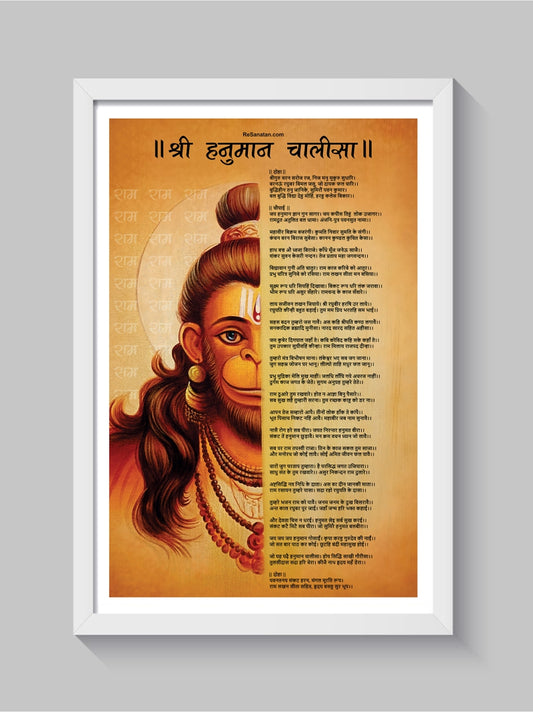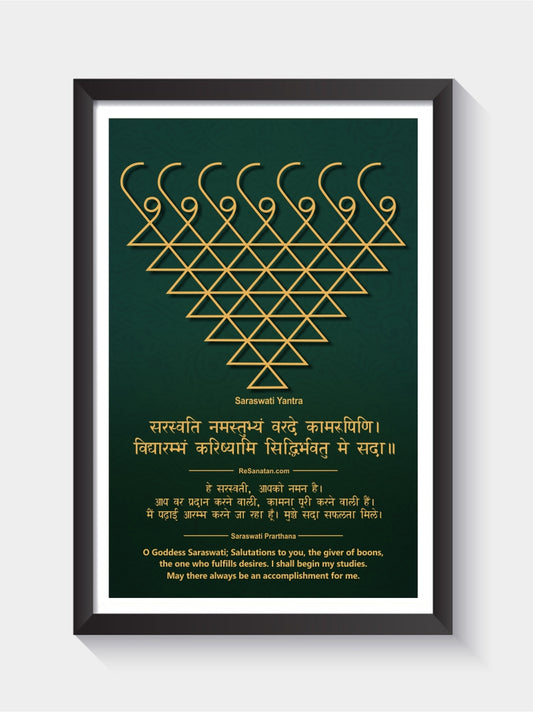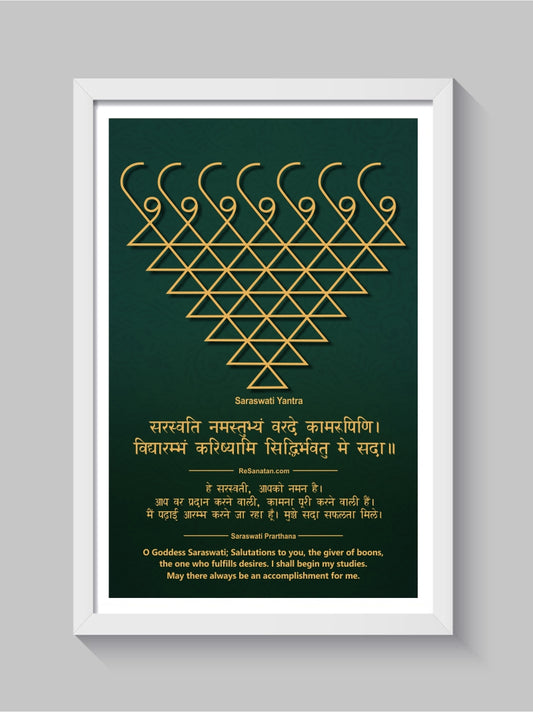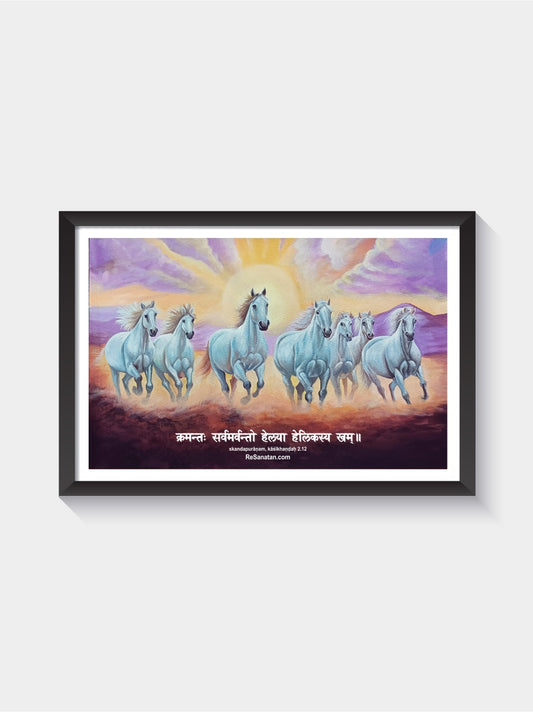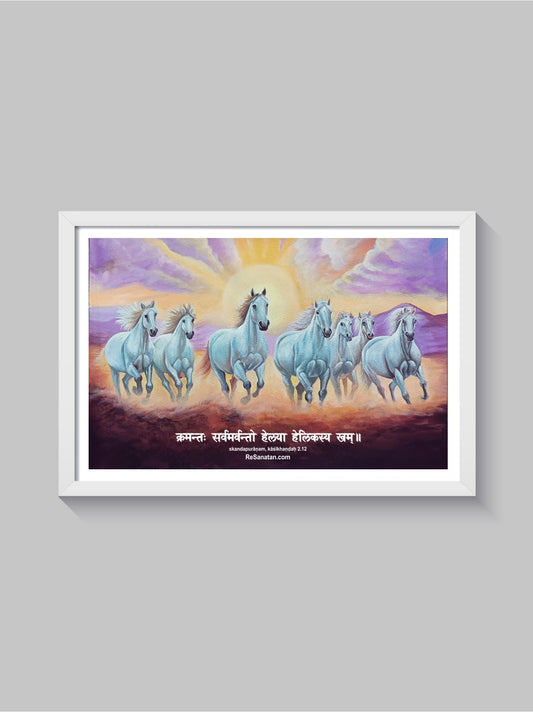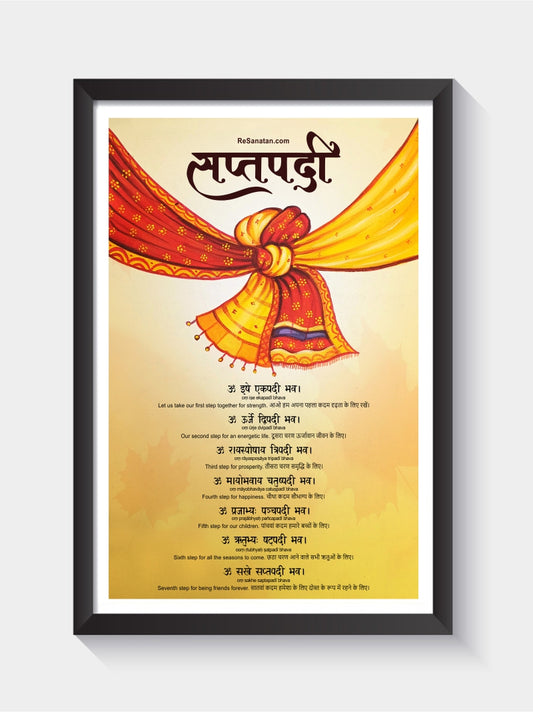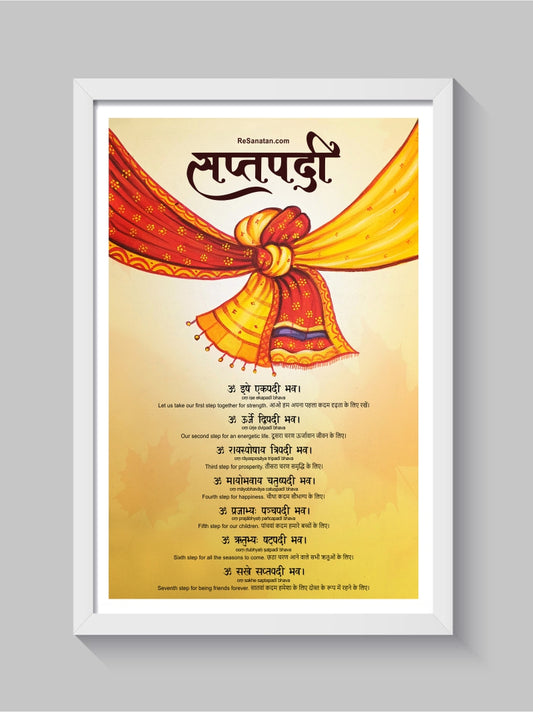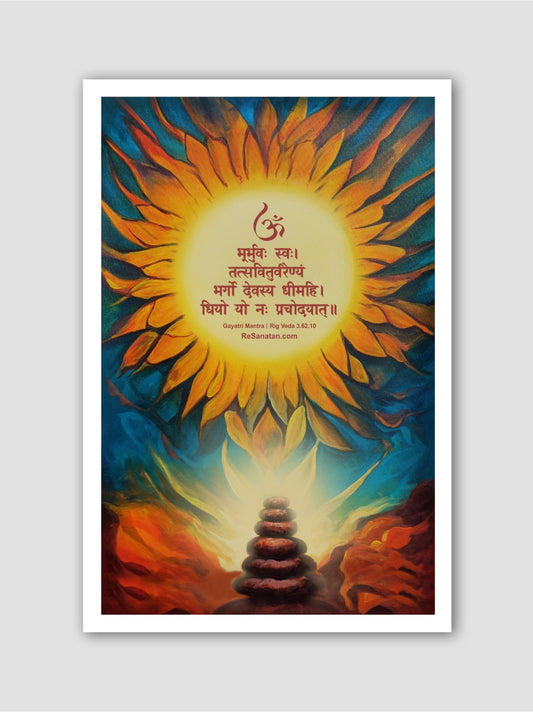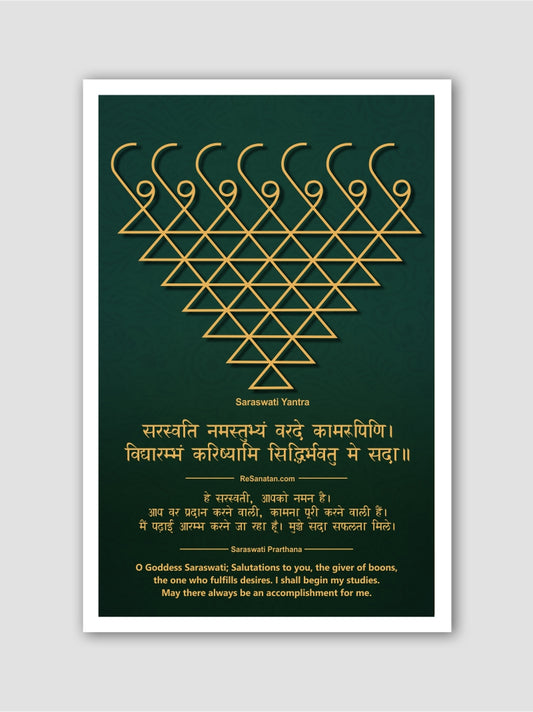
Shiv Tandav Stotram: English & Hindi/Sanskrit Lyrics, Meaning, Origin & Significance
Share
The Shiv Tandav Stotram is an ancient hymn dedicated to Lord Shiva, one of the principal deities in Hinduism. This sacred composition holds great reverence among devotees for its captivating verses and profound spiritual significance. Let's delve into the essence of this divine chant, exploring its English and Hindi lyrics, decoding the meaning of each line, its historical background, and the countless benefits it is believed to offer.
Jatatavigalajjala pravahapavitasthale
Galeavalambya lambitambhujangatungamalikam |
Damad damad damaddama ninadavadamarvayam
Chakara chand tandavam tanotu nah shivah shivam ||1||
Jatakatahasambhrama bhramanilimpanirjhari
Vilolavichivalarai virajamanamurdhani |
Dhagadhagadhagajjvalalalata-pattapavake
Kishorachandrashekhare ratih pratikshanam mam ||2||
Dharadharendranandini vilasabandhubandhur
Sphuraddigantasantatipramodamanamanase |
Kripakatakshadhoraṇiniruddhadurdharapadi
Kvachiddigambare mano vinodametu vastuni ||3||
Jatabhujangapingalasphuratphana-maniprabha
Kadambakunkumadravapralipta-digvadhumukhe |
Madaandhasindhuraspurattvaguttariyamedure
Mano vinodamadbhutam bibhartu bhutabhartari ||4||
Sahasralochanaprabhritiaseshalekhasekhara
Prasunadhulidhorani vidhusaranghripithabhu |
Bhujangarajamalaya nibaddhajatjutaka
Shriyai chiraya jayatam chakorabandhusekhara ||5||
Lalatachatvarajvaladdhananjayasphulingabha
Nipitapanchasayakam namanilimpanayakam |
Sudhamayukhalekhaya virajamanasekharam
Mahakapalisampadeshirojatalamastu nah ||6||
Karalabhalapattikadhagaddhagaddhagajjvala
Dhananjayahutikritaprachandapanchasayake |
Dharadharendranandinikuchagrachitrapatrak
Prakalpanaikashilpini trilochane ratirmama ||7||
Navinameghamandalii niruddhadurdharasphurat
Kuhuunishiithiniitamah prabandhabaddhakandharah |
Nilimpanirjhariidhara stanotu krittisindhurah
Kalaanidhaanabandhurah shriyam jagaddhurandharah ||8||
Praphullanilapankajaprapanchakalimaprabha
Valambikanthakandaliruciprabaddhakandharam |
Smaracchidam puracchidam bhavacchidam makhacchidam
Gajacchidamdhakacchidam tamantakacchidam bhaje ||9||
Agarva sarvamangalakalakadambamanjari
Rasapravahamadhuri vijrimbhanamadhuvratam |
Smarantakam purantakam bhavantakam makhantakam
Gajantakandhakantakam tamantakandhakam bhaje ||10||
Jayatvadabhravibhramabhramadbhujangamashvas
Dvinirgamatkramasphuratkaralabhalahavyavat |
Dhimid-dhimid-dhimidhvnanmrdanga-tungamangala
Dhvanikramapravartita-pracandatandavah shivah ||11||
Drishadvichitratalpayorbhujangamauktikasrajor
Garishtharatnaloshtayoh suhridvipakshapakshayor |
Trinaravindachakshushoh prajamahimahendrayoh
Samam pravrittikah kada sadashivam bhajamyaham ||12||
Kada nilimpanirjharinikunjakotare vasan
Vimuktadurmatis sada shirah sthamanjalam vahan |
Vimuktalolalocano lalamabhala-lagnakah
Shiveti mantramuchcharan kada sukhi bhavamyaham ||13||
Nilimpa nathanagari kadambara maulamallika-
nigumphanirbhaksharanma dhushnikamano-harah |
Tanotu no manomudam vinodinimahanisham
Parishraya param padam tadangajatvisham chayah ||14||
Prachand vadvanal prabhashubhapracharani
Mahashṭasiddhikamini janavahuta jalpana |
Vimukt vam lochano vivahakalikadhvanih
Shiveti mantrabhushago jagajjayaya jayatam ||15||
Imam hi nityamevamuktamuttamottamam stavam
Pathansmaranbruwannaro vishuddhimetisantatam |
Hare gurau subhaktimashu yati nanayatha gatim
Vimohanam hi dehinam sushankarasya chintanam ||16||
Pujavasanasamaye dashavaktragitam
Yah shambhupujanaparam pathati pradoshe |
Tasya sthiram rathagajendraturangayuktam
Lakshmim sadaiva sumukhim pradadati shambhuh ||17||
Shiv Tandav Stotram Lyrics in Hindi/Sanskrit:
गलेऽवलम्ब्य लम्बितां भुजङ्गतुङ्गमालिकाम् ।
डमड्डमड्डमड्डमन्निनादवड्डमर्वयं
चकार चण्डताण्डवं तनोतु नः शिवः शिवम् ॥१॥
जटाकटाहसम्भ्रमभ्रमन्निलिम्पनिर्झरी
विलोलवीचिवल्लरीविराजमानमूर्धनि ।
धगद्धगद्धगज्ज्वलल्ललाटपट्टपावके
किशोरचन्द्रशेखरे रतिः प्रतिक्षणं मम ॥२॥
धराधरेन्द्रनंदिनीविलासबन्धुबन्धुर
स्फुरद्दिगन्तसन्ततिप्रमोदमानमानसे ।
कृपाकटाक्षधोरणीनिरुद्धदुर्धरापदि
क्वचिद्दिगम्बरे(क्वचिच्चिदम्बरे) मनो विनोदमेतु वस्तुनि ॥३॥
जटाभुजङ्गपिङ्गलस्फुरत्फणामणिप्रभा
कदम्बकुङ्कुमद्रवप्रलिप्तदिग्वधूमुखे ।
मदान्धसिन्धुरस्फुरत्त्वगुत्तरीयमेदुरे
मनो विनोदमद्भुतं बिभर्तु भूतभर्तरि ॥४॥
सहस्रलोचनप्रभृत्यशेषलेखशेखर
प्रसूनधूलिधोरणी विधूसराङ्घ्रिपीठभूः ।
भुजङ्गराजमालया निबद्धजाटजूटक
श्रियै चिराय जायतां चकोरबन्धुशेखरः ॥५॥
ललाटचत्वरज्वलद्धनञ्जयस्फुलिङ्गभा
निपीतपञ्चसायकं नमन्निलिम्पनायकम् ।
सुधामयूखलेखया विराजमानशेखरं
महाकपालिसम्पदेशिरोजटालमस्तु नः ॥६॥
करालभालपट्टिकाधगद्धगद्धगज्ज्वल
द्धनञ्जयाहुतीकृतप्रचण्डपञ्चसायके ।
धराधरेन्द्रनन्दिनीकुचाग्रचित्रपत्रक
प्रकल्पनैकशिल्पिनि त्रिलोचने रतिर्मम ॥७॥
नवीनमेघमण्डली निरुद्धदुर्धरस्फुरत्
कुहूनिशीथिनीतमः प्रबन्धबद्धकन्धरः ।
निलिम्पनिर्झरीधरस्तनोतु कृत्तिसिन्धुरः
कलानिधानबन्धुरः श्रियं जगद्धुरंधरः ॥८॥
प्रफुल्लनीलपङ्कजप्रपञ्चकालिमप्रभा
वलम्बिकण्ठकन्दलीरुचिप्रबद्धकन्धरम् ।
स्मरच्छिदं पुरच्छिदं भवच्छिदं मखच्छिदं
गजच्छिदांधकच्छिदं तमन्तकच्छिदं भजे ॥९॥
अगर्व सर्वमङ्गलाकलाकदम्बमञ्जरी
रसप्रवाहमाधुरी विजृम्भणामधुव्रतम् ।
स्मरान्तकं पुरान्तकं भवान्तकं मखान्तकं
गजान्तकान्धकान्तकं तमन्तकान्तकं भजे ॥१०॥
जयत्वदभ्रविभ्रमभ्रमद्भुजङ्गमश्वस
द्विनिर्गमत्क्रमस्फुरत्करालभालहव्यवाट् ।
धिमिद्धिमिद्धिमिध्वनन्मृदङ्गतुङ्गमङ्गल
ध्वनिक्रमप्रवर्तित प्रचण्डताण्डवः शिवः ॥११॥
दृषद्विचित्रतल्पयोर्भुजङ्गमौक्तिकस्रजोर्
गरिष्ठरत्नलोष्ठयोः सुहृद्विपक्षपक्षयोः ।
तृणारविन्दचक्षुषोः प्रजामहीमहेन्द्रयोः
समं प्रव्रितिक: कदा सदाशिवं भजाम्यहम ॥१२॥
कदा निलिम्पनिर्झरीनिकुञ्जकोटरे वसन्
विमुक्तदुर्मतिः सदा शिरः स्थमञ्जलिं वहन् ।
विमुक्तलोललोचनो ललामभाललग्नकः
शिवेति मंत्रमुच्चरन् कदा सुखी भवाम्यहम् ॥१३॥
निलिम्प नाथनागरी कदम्ब मौलमल्लिका-
निगुम्फनिर्भक्षरन्म धूष्णिकामनोहरः ।
तनोतु नो मनोमुदं विनोदिनींमहनिशं
परिश्रय परं पदं तदङ्गजत्विषां चयः ॥१४॥
प्रचण्ड वाडवानल प्रभाशुभप्रचारणी
महाष्टसिद्धिकामिनी जनावहूत जल्पना ।
विमुक्त वाम लोचनो विवाहकालिकध्वनिः
शिवेति मन्त्रभूषगो जगज्जयाय जायताम् ॥१५॥
इमं हि नित्यमेवमुक्तमुत्तमोत्तमं स्तवं
पठन्स्मरन्ब्रुवन्नरो विशुद्धिमेतिसंततम् ।
हरे गुरौ सुभक्तिमाशु याति नान्यथा गतिं
विमोहनं हि देहिनां सुशङ्करस्य चिंतनम् ॥१६॥
पूजावसानसमये दशवक्त्रगीतं
यः शम्भुपूजनपरं पठति प्रदोषे ।
तस्य स्थिरां रथगजेन्द्रतुरङ्गयुक्तां
लक्ष्मीं सदैव सुमुखिं प्रददाति शम्भुः ॥१७॥
Shiv Tandav Stotram English Lyrics with Meaning:
Overall, this verse beautifully describes Lord Shiva's awe-inspiring form with matted hair, adorned with the sacred river Ganges and snakes, and his radiant forehead bearing the crescent moon and the divine fire. The verse emphasizes the eternal love and devotion of the devotee towards the divine Lord, who is the source of cosmic energy and the embodiment of transformation and destruction in the universe.
3. Dharadharendranandini vilasabandhubandhur
Sphuraddigantasantatipramodamanamanase |
Kripakatakshadhoraṇiniruddhadurdharapadi
Kvachiddigambare mano vinodametu vastuni ||3||
Meaning:
1. Dharadharendranandini: This refers to Parvati, the daughter of the Himalayas. She is also known as Shiva's wife and is addressed as "nandini" (daughter of Nandi) and "daughter of the mountain" (referring to her father, the Himalaya).
2. Vilasabandhubandhur: Shiva is addressed here as "Vilasa-bandhu," meaning the friend or companion of the peacock, which is often associated with him. The peacock is said to be his vehicle or vahana.
3. Sphuraddigantasantatipramodamanamanase: Shiva's mind is continuously filled with joy and delight. The phrase "diganta santati" may refer to the line of gods, as Shiva is considered the chief deity. His mind is always happy and content.
4. Kripakatakshadhoraṇiniruddhadurdharapadi: Shiva's feet are symbolically described as being difficult to hold back (durdhara padi). He is also known for his compassionate and merciful nature, which is represented by the term "kripa-kataksha-dhara" (holding the glance of compassion).
5. Kvachiddigambare Mano Vinodametu Vastuni: "Kvachit" means sometimes. Here, the verse depicts the playful interactions between Shiva and Parvati. Sometimes, Parvati playfully places her hand on Shiva's chest (digambare) in an affectionate manner. This becomes a delightful play (mano vinodam) for both of them.
The verse beautifully captures the divine and loving relationship between Lord Shiva and Goddess Parvati. It portrays their interactions and moments of affection, which symbolize the eternal union of the divine masculine and feminine energies in Hindu mythology. The verse also reflects the joy and harmony in the divine realm.
4. Jatabhujangapingalasphuratphana-maniprabha
Kadambakunkumadravapralipta-digvadhumukhe |
Madaandhasindhuraspurattvaguttariyamedure
Mano vinodamadbhutam bibhartu bhutabhartari ||4||
Meaning:
1. Jatabhujangapingalasphuratphana-maniprabha: This line describes the radiant and shining complexion of the Goddess. Her skin is compared to the raised hood of a cobra (Jata-bhujanga), and it glows with the brilliance of shining gems (phana-mani-prabha).
2. Kadambakunkumadravapralipta-digvadhumukhe: The verse continues to praise the Goddess's beauty. Her face is compared to the Kadamba flower, known for its redness and fragrance. The mention of "pralipta" (smudged) signifies the natural redness of her lips, which enhances her beauty.
3. Madaandhasindhuraspurattvaguttariyamedure: Here, the verse uses metaphorical language to describe the lower lip of the Goddess. It is compared to the end part (uttariya) of the ocean (Sindhu), and it appears like the king of intoxicated oceans (mada-andha-sindhu-rasapura), possibly referring to the intoxicating charm and sweetness of her smile.
4. Mano vinodamadbhutam bibhartu bhutabhartari: The verse concludes by expressing a wish. It prays that the Goddess, who is the supporter and sustainer of all beings, holds and enjoys the wondrous and marvelous play of her own mind.
This verse beautifully portrays the divine beauty of Goddess Parvati, emphasizing her radiant and captivating features. The poet uses vivid imagery and poetic devices to exalt her charm and grace. The verse also acknowledges the Goddess as the protector and nurturer of all living beings, adding a touch of reverence to the admiration expressed in the verse.
5. Sahasralochanaprabhritiaseshalekhasekhara
Prasunadhulidhorani vidhusaranghripithabhu |
Bhujangarajamalaya nibaddhajatjutaka
Shriyai chiraya jayatam chakorabandhusekhara ||5||
Meaning:
1. Sahasralochanaprabhritiaseshalekhasekhara: The verse begins by describing the peacock (the vehicle or vahana of Lord Kartikeya) in all its glory. The peacock is adorned with a thousand eyes (sahasra-lochana), signifying its resplendent beauty.
2. Prasunadhulidhorani vidhusaranghripithabhu: The crest of the peacock is adorned with lines of beautiful flowers (prasuna-dhulidhara), which adds to its charm. The verse also mentions that the peacock's feet are covered with moonbeams (vidhusaranghri-pithabhu), suggesting a celestial association.
3. Bhujangarajamalaya nibaddhajatjutaka: The peacock's tail is described here as being adorned with the twisted coils of a dark snake (bhujanga-raja-malaya-nibaddha-jatjutaka), adding a touch of symbolism and awe to its appearance.
4. Shriyai chiraya jayatam chakorabandhusekhara: The verse concludes with a prayer, wishing for a long life (chiraya jayatam) for the peacock (Chakorabandhu) for the sake of the Goddess (Shriya), implying that the peacock is devoted to the Goddess Parvati.
The verse masterfully captures the magnificence of Lord Kartikeya's vahana, the peacock. The vivid descriptions and poetic imagery highlight the divine and ethereal nature of the peacock, which is believed to be the bird that gazes at the moon, adding to its mystic allure. The verse also implies the peacock's devotion and service to the Goddess, emphasizing the divine connection between Lord Kartikeya, his vahana, and the divine feminine energy.
6. Lalatachatvarajvaladdhananjayasphulingabha
Nipitapanchasayakam namanilimpanayakam |
Sudhamayukhalekhaya virajamanasekharam
Mahakapalisampadeshirojatalamastu nah ||6||
Meaning:
1. Lalatachatvarajvaladdhananjayasphulingabha: This line describes Lord Shiva's forehead. It glows brightly with a beautiful crescent moon (dhananjaya), which shines like a jewel (sphulinga) on the forehead, making it radiant and enchanting.
2. Nipitapanchasayakam namanilimpanayakam: Lord Shiva's forehead is adorned with a faint mark of musk (nami), and vermilion (naman) which is typically worn by women as an auspicious symbol.
3. Sudhamayukhalekhaya virajamanasekharam: Lord Shiva's matted hair is compared to a garland of divine serpents. The verse portrays the serpents as pure and resplendent (sudha-maya ukhalekhaya), symbolizing the divine energy.
4. Mahakapalisampadeshirojatalamastu nah: The verse concludes with a prayer, requesting Lord Shiva to bless us with a head adorned with the matted locks (jatamastu) as he wears (sampadeshi) the great skull (Mahakapala). The skull signifies the detachment from the material world and the transcendence beyond life and death.
This verse beautifully portrays Lord Shiva's physical attributes and divine adornments. The poet uses poetic imagery to describe Shiva's enchanting appearance, which is often depicted in Hindu iconography and mythology. The verse also highlights the significance of the crescent moon, matted locks, and the sacred mark on his forehead. Lord Shiva is revered as the destroyer and the source of cosmic energy, and this verse captures his divine essence and mystical beauty.
7. Karalabhalapattikadhagaddhagaddhagajjvala
Dhananjayahutikritaprachandapanchasayake |
Dharadharendranandinikuchagrachitrapatrak
Prakalpanaikashilpini trilochane ratirmama ||7||
Meaning:
1. Karalabhalapattikadhagaddhagaddhagajjvala: This phrase describes the fiery and dreadful aspect of Lord Shiva, represented by the third eye on his forehead. It is said to be a flame that can destroy anything with a mere gaze, symbolizing his power as the destroyer.
2. Dhananjayahutikritaprachandapanchasayake: Lord Shiva is known by many names, and "Dhananjaya" is one of them. It refers to the one who gracefully accepts the offerings made in the fire sacrifices. The verse also mentions that he wields the mighty Panchasayaka bow, representing his strength and valor.
3. Dharadharendranandinikuchagrachitrapatrak: Here, the verse portrays Lord Shiva wearing the crescent moon on his matted locks (Dharadharendra nandini kuchagrachitrapatrak). This signifies his association with the moon and its cycles.
4. Prakalpanaikashilpini: The verse also highlights Lord Shiva as the sole creator (prakalpanaika shilpini), emphasizing his role as the divine artist and creator of the universe.
5. Trilochane ratirmama: The verse concludes with the poet expressing his deep affection and devotion to the three-eyed Lord Shiva, declaring that his love resides in him.
8. Navinameghamandalii niruddhadurdharasphurat
Kuhuunishiithiniitamah prabandhabaddhakandharah |
Nilimpanirjhariidhara stanotu krittisindhurah
Kalaanidhaanabandhurah shriyam jagaddhurandharah ||8||
Meaning:
1. Navinameghamandalii: This describes Lord Shiva's complexion, which is compared to a cluster of fresh rain clouds. The bluish hue represents his association with the infinite sky and the power of creation.
2. Niruddhadurdharasphurat: Lord Shiva's throat is referred to as "niruddha durdhara," meaning firmly locked and capable of holding deadly poison. This alludes to the incident during the churning of the ocean (Samudra Manthan), where he consumed the poison to protect the world.
3. Kuhuunishiithiniitama: This line mentions that Lord Shiva's neck is adorned with the crescent moon (Kuhu) and the cool Ganga river (Nishiithiniitama) in his matted locks. The crescent moon symbolizes the passage of time, while the river Ganga represents purity and divinity.
4. Prabandhabaddhakandharah: Lord Shiva is depicted as wearing the serpent Vasuki as his garland, which represents his control over the potent and dangerous forces of nature.
5. Krittisindhurah: The term "Krittisindhurah" refers to the river Ganga, indicating that Shiva holds the sacred river within his matted hair, thus preventing its force from inundating the earth.
6. Kalaanidhaanabandhurah: This phrase depicts Lord Shiva as the storehouse of all arts, knowledge, and wisdom. He is considered the patron of arts and the source of cosmic creation.
7. Shriyam jagaddhurandharah: The verse concludes with a prayer, asking Lord Shiva to bestow prosperity (Shriyam) upon the entire world (jagaddhurandharah), signifying his benevolent and caring nature.
This verse beautifully describes the awe-inspiring appearance and divine attributes of Lord Shiva. It portrays him as the powerful and compassionate deity, capable of both destruction and preservation. The verse also emphasizes his association with the moon, the Ganga river, and his role as the protector of the universe. The poet's admiration and reverence for Lord Shiva shine through in this verse.
9. Praphullanilapankajaprapanchakalimaprabha
Valambikanthakandaliruciprabaddhakandharam |
Smaracchidam puracchidam bhavacchidam makhacchidam
Gajacchidamdhakacchidam tamantakacchidam bhaje ||9||
Meaning:
1. Praphullanilapankajaprapanchakalimaprabha: This line describes Lord Shiva's radiant complexion, which is compared to the fully bloomed blue lotus. The blue lotus symbolizes purity, detachment, and spiritual enlightenment.
2. Valambikanthakandaliruciprabaddhakandharam: Lord Shiva is adorned with a garland of fresh and beautiful forest flowers hanging around his neck, enhancing his divine appearance.
3. Smaracchidam puracchidam bhavacchidam makhacchidam: The verse highlights Lord Shiva's roles as the destroyer of Kamadeva, the god of desire (smaracchidam), and the demon Tripura (puracchidam). He is also known for breaking the cycle of births and deaths, signifying liberation from the cycle of reincarnation (bhavacchidam).
4. Gajacchidam dhakacchidam tamantakacchidam: Lord Shiva is revered for his victories over various demons and negative forces. He destroyed the demon Gajasura, who had taken the form of an elephant (gajacchidam), and the demon Dhaksha, who opposed him (dhakacchidam). Additionally, he annihilated Yama, the god of death, symbolized by the noose (tantakacchidam).
This verse praises Lord Shiva as the supreme and all-powerful deity who holds the power of creation, preservation, and destruction. It showcases his diverse aspects, from his gentle and compassionate nature (symbolized by the forest flowers and the blue lotus) to his fierce and formidable form as the destroyer of evil forces and desires. The poet pays homage to Lord Shiva's omnipotence and seeks his blessings and protection through this eloquent verse.
10. Agarva sarvamangalakalakadambamanjari
Rasapravahamadhuri vijrimbhanamadhuvratam |
Smarantakam purantakam bhavantakam makhantakam
Gajantakandhakantakam tamantakandhakam bhaje ||10||
Meaning:
1. Agarva sarvamangalakalakadambamanjari: This line beautifully describes Lord Shiva's divine form as a bunch of fragrant and auspicious blossoms, symbolizing his purity, beauty, and benevolence.
2. Rasapravahamadhuri vijrimbhanamadhuvratam: The verse highlights Lord Shiva's essence, which is sweetness itself, symbolized by a continuous flow of divine nectar (madhuri vijrimbhanamadhuvratam).
3. Smarantakam purantakam bhavantakam makhantakam: Lord Shiva is known as Smarantaka, as he destroyed Kamadeva, the god of love, when he disturbed Shiva's meditation. He is also called Purantaka, the destroyer of the demon Tripura, and Bhavantaka, the one who brings an end to all beings and existence.
4. Gajantakandhakantakam tamantakandhakam: The verse also praises Lord Shiva as the destroyer of the demon Gajasura (gajantakam) and the demon Andhaka (andhakantakam).
5. Bhaje: The verse concludes with the poet offering his salutations and devotion to Lord Shiva.
This verse beautifully glorifies Lord Shiva's divine attributes and his multifaceted nature. It portrays him as the epitome of bliss, sweetness, and auspiciousness, while also emphasizing his role as the destroyer of negative forces, desires, and obstacles. The poet's admiration and reverence for Lord Shiva are evident in this eloquent verse, as he seeks blessings and protection from the supreme deity who holds the power to bestow prosperity and liberation.
11. Jayatvadabhravibhramabhramadbhujangamashvas
Dvinirgamatkramasphuratkaralabhalahavyavat |
Dhimid-dhimid-dhimidhvnanmrdanga-tungamangala
Dhvanikramapravartita-pracandatandavah shivah ||11||
Meaning:
1. Avadabhra vibhrama abhrama: The verse describes Lord Shiva's matted hair (jata), which is disheveled and whirls around as he dances, likened to the movement of a wild elephant.
2. Bhujangamashvas: The verse mentions that the serpents on Lord Shiva's neck (representing his power over destructive forces) are moving with excitement, possibly due to the fervor of his dance.
3. Karala bhalahavyavat: Lord Shiva's dance is described as fierce and vigorous (karala), symbolizing the destructive aspect of creation.
4. Dhimid-dhimid-dhimidhvnan: This is an onomatopoeic representation of the rhythmic beats or sounds that arise during Lord Shiva's cosmic dance.
5. Mrdanga-tungamangala: The sounds of Lord Shiva's dance are likened to the rhythmic beats of the celestial drums (mrdanga), symbolizing the divine celebration of creation and destruction.
6. Dhvanikramapravartita-pracandatandavah shivah: This line concludes the verse by affirming that Lord Shiva's powerful and vigorous dance (tandavah) sets in motion the reverberating and roaring sound (dhvanikrama) of the drums, symbolizing the commencement of the cosmic dance of creation and destruction. It highlights the tremendous energy and intensity of Lord Shiva's Tandav, which brings forth the dynamic cycles of the universe.
The verse beautifully captures the grandeur and power of Lord Shiva's cosmic dance, known as the Tandava. It portrays him as the supreme deity who embraces both creative and destructive aspects of the universe. The dance symbolizes the eternal cycle of creation, preservation, and destruction in the cosmic order. Lord Shiva's Tandava is considered a potent force that maintains the balance of the universe and keeps the cosmic energy flowing. The poet expresses devotion and reverence to Lord Shiva and praises his awe-inspiring dance that brings harmony to the cosmos.
12. Drishadvichitratalpayorbhujangamauktikasrajor
Garishtharatnaloshtayoh suhridvipakshapakshayor |
Trinaravindachakshushoh prajamahimahendrayoh
Samam pravrittikah kada sadashivam bhajamyaham ||12||
Meaning:
1. Drishadvichitratalpayorbhujangamauktikasrajor: This line describes Lord Shiva's unique appearance. He adorns an array of diverse and wonderful snakes as his ornaments, symbolizing his control over destructive forces and his association with the mystical realm.
2. Garishtharatnaloshtayoh: Lord Shiva is adorned with a beautiful garland of pearls (uktikasrajor) and the most precious jewels (garishtha ratna loshtayoh), highlighting his divine majesty and splendor.
3. Suhridvipakshapakshayoh: Lord Shiva treats his friends (suhrid) and foes (vipaksha) with equal benevolence (paksha), signifying his impartial and compassionate nature.
4. Trinaravindachakshushoh prajamahimahendrayoh: Lord Shiva is praised for his three eyes (trinetra), with the third eye representing higher knowledge and insight. He is considered equal even to Indra, the king of gods (mahendra), in his benevolence towards all beings (prajam).
5. Samam pravrittikah kada sadashivam bhajamyaham: The last part of the verse expresses the longing and devotion of the poet. "Samam" means equality, indicating that the poet aspires to be free from the dualities of the world and approach Lord Shiva with an equanimous mind. "Pravrittikah" refers to the worldly involvements and desires. The poet yearns for the time when he can wholeheartedly worship and adore Lord Shiva, the eternal auspicious being (Sada Shiva).
The verse beautifully captures the divine attributes of Lord Shiva. It portrays him as the ultimate embodiment of equality, compassion, and grandeur. Lord Shiva's unique appearance and adornments are symbolic of his mastery over the universe and his profound connection with all living beings. The poet expresses his heartfelt longing to worship and praise Lord Shiva, the eternal and benevolent deity who grants blessings to all, regardless of their status or nature.
13. Kada nilimpanirjharinikunjakotare vasan
Vimuktadurmatis sada shirah sthamanjalam vahan |
Vimuktalolalocano lalamabhala-lagnakah
Shiveti mantramuchcharan kada sukhi bhavamyaham ||13||
Meaning:
1. Kada nilimpanirjharinikunjakotare vasan: The verse speaks of a serene and solitary setting. The devotee expresses a longing to sit in a cave (kunjakotare) near the cascading waterfalls (nilimpanirjharini), adorned with sacred ash (vibhuti) from the burnt forest, symbolizing detachment from the material world.
2. Vimuktadurmatis sada shirah sthamanjalam vahan: The devotee envisions having a liberated (vimukta) and clear (durmatis) mind, continuously carrying the offering of folded hands (sthamañjalam) on their head as a mark of humility and devotion.
3. Vimuktalolalocano lalamabhala-lagnakah: The verse describes the devotee's aspiration to have eyes that are free from any restlessness (vimukta-lola-locano) and a throat adorned with a snake (lalamabhala-lagnakah), symbolizing Lord Shiva's possession of poison as a result of consuming the halahala poison during the churning of the ocean.
4. Shiveti mantramuchcharan kada sukhi bhavamyaham: The verse concludes with the devotee yearning for the opportunity to continuously chant the sacred mantra 'Shiva,' seeking ultimate happiness and contentment in devotion to Lord Shiva.
This verse beautifully depicts the devotee's longing for a life of spiritual fulfillment and dedication to Lord Shiva. It portrays a picturesque scene of being immersed in solitude near the mesmerizing waterfalls while wearing the sacred ash and chanting the name of Lord Shiva, seeking liberation and peace. The verse reflects the deep devotion and desire to lead a life filled with the bliss of Lord Shiva's divine presence and blessings.
14. Nilimpa nathanagari kadambara maulamallika-
nigumphanirbhaksharanma dhushnikamano-harah |
Tanotu no manomudam vinodinimahanisham
Parishraya param padam tadangajatvisham chayah ||14||
Meaning:
1. Nilimpa nathanagari: This refers to the venom (nagari) that Lord Shiva consumed during the churning of the ocean (Samudra Manthan). It is believed that Shiva held the poison in his throat to protect the world, and the residue of this venom is said to bring delight to the devotees' minds.
2. Kadambara maulamallika: The verse mentions that Lord Shiva's matted hair is adorned with blue lilies (kadambara) and jasmine flowers (maulamallika), symbolizing his divine presence and beauty.
3. Nigumphanirbhaksharanma dhushnikamano-harah: Lord Shiva is depicted as being delighted by the sound of humming bees (nigumpha) that surround him (bhaksharanma), signifying his tranquil and serene nature.
4. Tanotu no manomudam vinodinimahanisham: The verse seeks Lord Shiva's blessings to bring delight and joy (manomudam) to the devotees' hearts, like the divine delight of his presence.
5. Parishraya param padam tadangajatvisham chayah: The verse expresses the longing for the ultimate shelter (parishraya) at the lotus feet (param padam) of Lord Shiva, where the great serpents (angajatvisham) that adorn him provide a protective shadow (chayah) of grace and divine blessings.
This verse beautifully captures the devotee's love and reverence for Lord Shiva. It praises the divine attributes of Lord Shiva, including his power to protect and grant refuge to his devotees. The verse also describes the serene and divine beauty of Lord Shiva, adorned with flowers and the company of bees, evoking a sense of peace and tranquility. The devotee seeks solace and happiness in the divine presence of Lord Shiva, praying for his blessings and protection at his lotus feet.
15. Prachand vadvanal prabhashubhapracharani
Mahashṭasiddhikamini janavahuta jalpana |
Vimukt vam lochano vivahakalikadhvanih
Shiveti mantrabhushago jagajjayaya jayatam ||15||
Meaning:
1. Prachand vadvanal prabhashubhapracharani: This line describes Lord Shiva's speech as being like a fierce fire (prachand vadvanal) that spreads auspiciousness (prabhashubhapracharani). It indicates that Lord Shiva's words have the power to purify and transform.
2. Mahashṭasiddhikamini: Lord Shiva is considered the bestower of great accomplishments and mystical powers (mahashṭasiddhi) to his devotees.
3. Janavahuta jalpana: Lord Shiva is invoked and praised by countless devotees (janavahuta) through their prayers and chants.
4. Vimukt vam lochano: The verse mentions that Lord Shiva's left eye (vam lochana) is free from any attachments, symbolizing his supreme detachment and transcendence beyond worldly desires.
5. Vivahakalikadhvanih: The verse refers to the sound of Lord Shiva's Damru, a small drum, which is believed to signify the rhythmic creation of the universe (vivaha), representing the cyclic nature of existence.
6. Shiveti: This refers to the divine mantra "Shiva," which is one of the sacred names of Lord Shiva. The word "Shiva" carries the connotations of auspiciousness, benevolence, and the quality of being all-auspicious. Chanting this mantra is considered highly propitious and is believed to invoke the grace of Lord Shiva.
7. Mantrabhushago: "Bhushaga" means adorned or adorned with, and "mantra" here refers to the sacred syllable or chant. Hence, "mantrabhushago" implies that Lord Shiva is adorned with the sacred mantra "Shiva," signifying that he is the embodiment of the mantra's divine essence and significance.
8. Jagajjayaya jayatam - This phrase expresses a call for victory and celebration in praise of Lord Shiva, the one who is victorious (jayaya) over the world (jagat). The repetition of "jayatam" emphasizes the exclamation of victory and triumph.
The verse glorifies Lord Shiva as the divine source of power, knowledge, and creation. It emphasizes his benevolence in bestowing blessings and fulfillment of desires to his devotees. His speech is likened to a powerful fire that purifies and spreads auspiciousness. The verse also highlights Lord Shiva's detachment and his role in the cosmic dance of creation and destruction, represented by the sound of his Damru. Overall, the verse expresses devotion and reverence to Lord Shiva and calls for victory and celebration in his divine presence.
16. Imam hi nityamevamuktamuttamottamam stavam
Pathansmaranbruwannaro vishuddhimetisantatam |
Hare gurau subhaktimashu yati nanayatha gatim
Vimohanam hi dehinam sushankarasya chintanam ||16||
Meaning:
1. Imam hi nityamevamuktamuttamottamam stavam: The verse emphasizes that this hymn, devoted to Lord Shiva, is supreme and excellent (uttamottamam). The practice of regularly reciting (nityamevamuktam), remembering, or proclaiming this hymn is highly beneficial for devotees.
2. Pathansmaranbruwannaro vishuddhimetisantatam: Through the acts of reciting, remembering, or proclaiming this hymn, a person attains continuous purification (vishuddhim eti santatam). These practices help in cleansing the mind, heart, and soul, leading to spiritual upliftment.
3. Hare gurau subhaktimashu yati nanayatha gatim: The devotee, with deep devotion (subhakti) towards Lord Shiva (Hara), quickly attains the desired goal or liberation (gatim), just as a disillusioned person seeks shelter and protection without hesitation.
4. Vimohanam hi dehinam sushankarasya chintanam: The contemplation (chintanam) of Lord Shiva (Sushankarasya) is truly captivating (vimohanam) and liberating for all embodied beings (dehinam). It has the power to captivate and uplift the minds of devotees, leading them towards spiritual liberation.
The verse emphasizes the efficacy and benefits of reciting and meditating upon this hymn dedicated to Lord Shiva. The hymn's regular practice purifies the devotee's mind and soul, leading to spiritual growth and transformation. It highlights that deep devotion and contemplation of Lord Shiva lead to a quick realization of one's spiritual aspirations and goals. The verse also stresses that Lord Shiva's contemplation has the power to captivate and liberate all living beings. Overall, the verse extols the significance of devotion to Lord Shiva and emphasizes its transformative effects on the spiritual journey.
17. Pujavasanasamaye dashavaktragitam
Yah shambhupujanaparam pathati pradoshe |
Tasya sthiram rathagajendraturangayuktam
Lakshmim sadaiva sumukhim pradadati shambhuh ||17||
Meaning:
1. Pujavasanasamaye dashavaktragitam: This phrase refers to the hymn of ten verses (dashavaktragitam) that is sung or recited during the time of worship (pujavasana). The devotee is praising Lord Shiva through this sacred hymn.
2. Yah shambhupujanaparam pathati pradoshe: One who recites or chants this hymn with utmost devotion and sincerity (param shambhupujanam) during the Pradosha period is specifically mentioned. The Pradosha period is the time around sunset and is considered highly auspicious for worshipping Lord Shiva.
3. Tasya sthiram rathagajendraturangayuktam: As a result of the devotee's devoted recitation during the Pradosha time, Lord Shiva grants them unwavering and stable wealth (sadaiva sumukhim lakshmim). This symbolizes prosperity, abundance, and all-round well-being. The verse further mentions that the devotee is blessed with various material possessions, such as elephants, chariots, and horses (rathagajendraturangayuktam), indicating the bestowal of royal wealth and prosperity.
4. Lakshmim sadaiva sumukhim pradadati shambhuh: The verse highlights that Lord Shiva, out of his infinite grace and benevolence, blesses the devotee with unwavering wealth and prosperity (sadaiva sumukhim lakshmim) along with various royal possessions. "Sumukhim" can also be interpreted as auspiciousness or good fortune, indicating that Lord Shiva grants all-around prosperity and well-being to the devotee.
In summary, the verse emphasizes the efficacy of reciting the hymn devoted to Lord Shiva during the auspicious Pradosha period. It assures the devotee that by offering sincere devotion to Lord Shiva through this hymn during this propitious time, they will be blessed with unwavering prosperity, auspiciousness, and abundance. The verse reflects the boundless grace and blessings that Lord Shiva bestows upon his devotees, making their lives filled with prosperity and spiritual well-being.
Shiv Tandav Stotram Origin:
The "Shiv Tandav Stotram" is a powerful and iconic hymn dedicated to Lord Shiva. It was composed by the legendary scholar and poet, Ravana, who was a devout devotee of Lord Shiva. The story behind its creation goes as follows:
According to Hindu mythology, Ravana was a highly learned and accomplished scholar, as well as a powerful ruler. He was a great devotee of Lord Shiva and wanted to show his devotion through extraordinary means. He wanted to bring Mount Kailash, the abode of Lord Shiva, to his capital city Lanka. To achieve this, he began to perform intense penance and meditation to please Lord Shiva.
Impressed by Ravana's devotion and determination, Lord Shiva appeared before him. Ravana then composed the "Shiv Tandav Stotram" in praise of Lord Shiva's cosmic dance (Tandav). It is said that he sang this hymn to express his reverence, awe, and devotion to the divine dance of Lord Shiva, which symbolizes the eternal cycle of creation, preservation, and destruction in the universe.
The "Shiv Tandav Stotram" is a highly melodious and powerful hymn that vividly describes the various aspects of Lord Shiva's cosmic dance. It portrays Lord Shiva as the Supreme Being, the creator, sustainer, and destroyer of the universe. The hymn beautifully describes the beauty and awe-inspiring aspects of Lord Shiva's dance and attributes, including his matted hair, third eye, and his adornments of snakes.
Significance of the "Shiv Tandav Stotram":
1. Devotion and Surrender: The hymn represents the deep devotion and surrender of Ravana towards Lord Shiva. It shows how a powerful and accomplished individual can be humbled by the magnificence of the divine.
2. Symbolism of Tandav: The "Shiv Tandav Stotram" symbolizes the cosmic dance of Lord Shiva, which represents the eternal rhythm of life and death, creation and destruction. It reminds us of the impermanence of the physical world and the eternal nature of the soul.
3. Spiritual Significance: The stotram holds significant spiritual value for devotees of Lord Shiva. It is believed that chanting or listening to the "Shiv Tandav Stotram" with devotion and understanding can lead to spiritual awakening and inner transformation.
4. Cultural and Artistic Impact: The hymn's poetic beauty and rhythm have made it not only a devotional hymn but also a masterpiece of Sanskrit literature. It has inspired artists, musicians, and dancers over the centuries to depict Lord Shiva's cosmic dance in various art forms.
The "Shiv Tandav Stotram" continues to be recited and cherished by devotees of Lord Shiva worldwide. Its rich verses and deep devotion serve as a reminder of the divine magnificence of Lord Shiva and the eternal dance of creation that surrounds us all.

